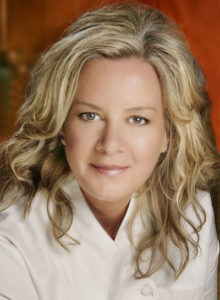 Sundays just aren’t what they used to be. Instead of a quiet day for contemplation, reflection, long-simmering pots on the stove and family gatherings, they’ve become and extension of errand-running Saturdays. Or worse, pre-work marathon of emails, phone calls and undone reports. No wonder we’re all so cranky on Monday.
Sundays just aren’t what they used to be. Instead of a quiet day for contemplation, reflection, long-simmering pots on the stove and family gatherings, they’ve become and extension of errand-running Saturdays. Or worse, pre-work marathon of emails, phone calls and undone reports. No wonder we’re all so cranky on Monday.
It’s time to bring back Sunday. If not in total, than at least to the table. And if not by mom’s hand, then by someone who’ll put as least as much love into the meal.
Throughout Sonoma County, chefs are inviting families to gather around their tables for hearty, comforting meals, often served communally. At once new and yet a very old tradition, it’s a way to reconnect and slow down around a shared plate of food — something we all too often forget to do — to break bread with those we love.But this time, you won’t have to worry about washing the dishes later.
Shimo Modern Steak: Cyrus Chef Douglas Keane’s new steakhouse can be a bit pricey for your average night out, but on Sunday, he welcomes locals with a stellar prix fixe line-up of prime rib, brioche sticky buns and veggies for $49 per person. (241 Healdsburg Ave, Healdsburg, 433-6000).
Just down the street, locals are already flocking to the ultra casual Frank and Ernie’s. In the former Western Boot, it’s a no-frills affair with solid eats, including drop-dead delicious onion straws and Sunday prime rib for about $26. (9 Mitchell Lane, Healdsburg, 433-2147). Another great spot for your Sunday meat fix: Monti’s Rotisserie and Wine Bar in Santa Rosa’s Montgomery Village. A Flintstone-sized slab of smoked prime rib with blue cheese butter and potato bacon latkes. Worth an extra splurge are the restaurant’s killer cocktails, like the Red Rickey with gin, ginger beer, lime and pomegranate. 714 Village Court, Santa Rosa, 568-4404.
Blue Label at the Belvedere: Miriam Donaldson and her crew are already getting rave reviews for their homey, made-from scratch cooking at Santa Rosa’s stately Belvedere. The former Humble Pie chef describes the restaurant vibe as, “Your favorite happy fat Auntie who drinks a little too much sherry.” With buffalo heads on the wall and weekly prix fixe Sunday dinners, it’s a convivial spot for families to chill before the long week ahead. Menus change weekly, but menu items include dishes like a giant soft beer pretzel, iceberg wedge with Pt. Reyes blue cheese and chicken jalapeno pie with creme fraiche. There’s usually one of Miriam’s killer pies around to finish things off. $30, 727 Mendocino Ave., Santa Rosa, 542-8705.
Santi: The popular supper club has moved to the last Sunday of each month. Served family-style, each month features favorite dishes from different regions. For February, the restaurant focuses on Emilia- Romanga region of Italy with antipasta of prosciutto di parma, tagliatelle Bolognese, a mixed grill of quail, rabbit and pork and Meyer lemon zuppa Inglese. 2097 Stagecoach Rd., Santa Rosa, 528-1549, $50 per person.
Estate: Sonoma’s cozy Cal-Italian trattoria serves up family style dinners for two or more throughout the week for $26 per person. Menus change up weekly, but include a multi-course meal with dishes like antipasti, ricotta gnocchi, roast lamb and beans with tiramisu for dessert. 400 West Spain St., Sonoma, 933-3663.
Bruno’s on Fourth: Rick Bruno’s meatloaf and mashed potatoes is as Sunday night as 60 Minutes and grandma’s fried chicken dinner. Grab a cup of Harry’s clam chowder and you’re set for the week ahead. 1226 4th Street, Santa Rosa, 569-8222.
Okay, so every night can’t be Sunday night. Suppers for every night of the week…
Monday Night Farm Suppers at Zazu: Three courses for $39 per person focus on hearty, rustic favorites like roasted lamb shoulder, and strawberry shortcake. 3535 Guerneville Rd., Santa Rosa, 523-4814.
Rustic’s A Tavola: Brand new to the table, A Tavola is part family dinner, part dinner theater at Francis Ford Coppola’s Rustic restaurant. With no set menu, roving waiters bring family-style plates around the dining room, offering up an assortment of dishes. Prices are determined by serving, so you can eat as much or as little as you’d like. Where things get even more fun: Wandering “relatives” like Cousin Giorgio, Uncle Roberto and cheek-pinching Great Aunt Christine make you feel like part of the family. Especially when someone starts singing. 5-9pm Tuesday, reservations recommended. 300 Via Archimedes, Geyserville, 857-1400.
Friday Night at Della Fattoria: Gather round the table each Friday night as Petaluma’s legendary downtown bakery stays open late and serves up hearty local fare like Osso bucco, polenta, short ribs and chicken cacciatore. Reservations are required, 141 Petaluma Boulevard North, Petaluma, 763-0161.
Have a favorite we missed? Add yours!
 If you like local food and wine, and the idea of watching an entire pig morph from carcass into dinner doesn’t scare you, then you could do worse than a Sunday afternoon spent eating and drinking alongside 5 local winemakers, 5 local chefs, and their 5 porcine victims – all from heritage bloodlines, all sustainably raised by local farmers – at COCHON555.
If you like local food and wine, and the idea of watching an entire pig morph from carcass into dinner doesn’t scare you, then you could do worse than a Sunday afternoon spent eating and drinking alongside 5 local winemakers, 5 local chefs, and their 5 porcine victims – all from heritage bloodlines, all sustainably raised by local farmers – at COCHON555.


















